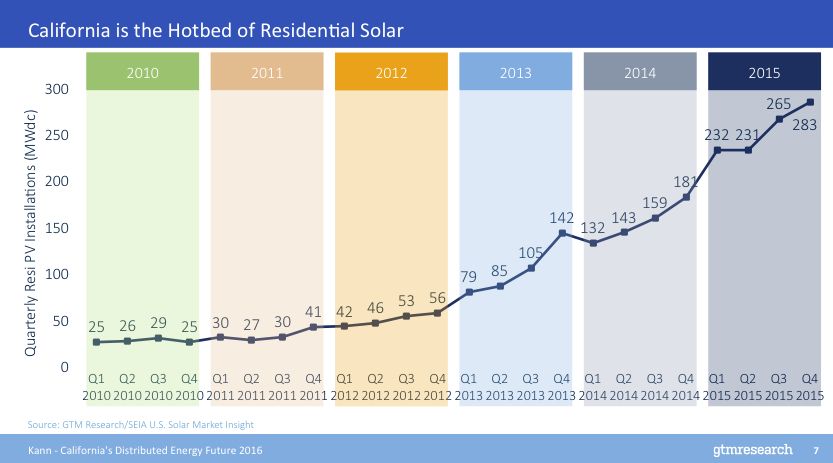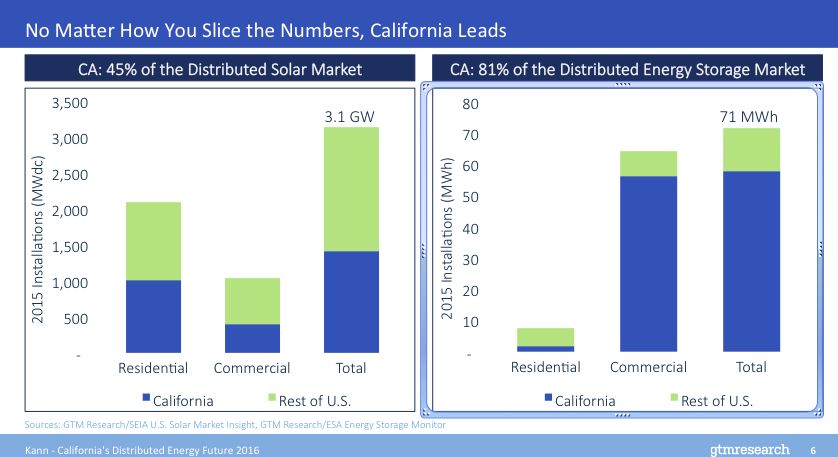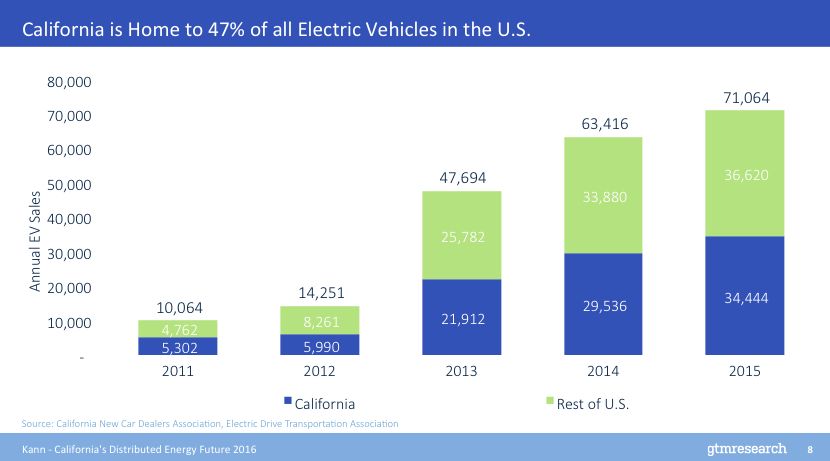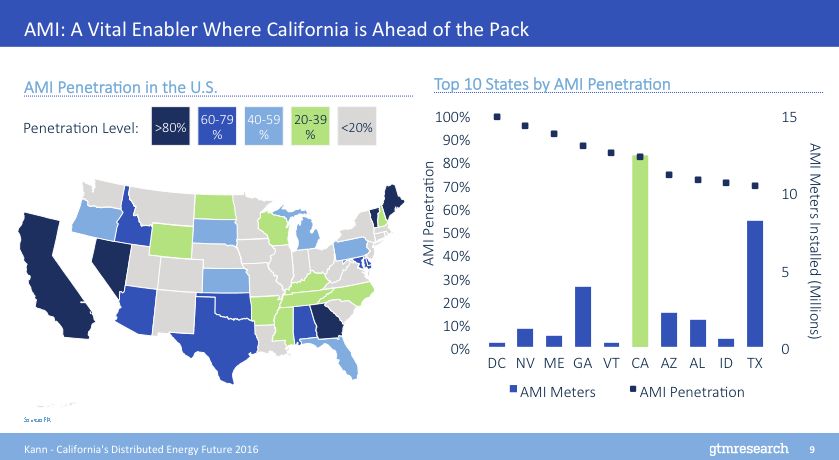"We don't normally do state-specific conferences," said GTM Senior Vice President of Research Shayle Kann as he kicked off last week's sold-out California Distributed Energy Future event in San Francisco.
"But California is a leader in [distributed energy resources]," he said, adding, "From a national perspective, it's quite impressive how far California is already ahead -- no matter how you cut the numbers."
Kann pointed out that the Golden State has the most distributed energy resources on the customer side of the meter "by a long shot."
"California accounted for almost half of distributed solar in the U.S. last year," said Kann, and when it comes to energy storage, "even more so."

Almost 81 percent of the behind-the-meter energy storage in the U.S. is in California, according to the GTM Research SVP. In fact, when it comes to storage in the U.S. at the moment, it's mostly behind-the-meter in California and front-of-the-meter in the PJM region.
Kann said that it is "residential solar more than anything else that is forcing this transformation" of the grid -- "We would not be having this conversation without it."
For four years straight, residential solar has grown more than 50 percent per year, said Kann, making it "the fundamental driver" of California's distributed energy resources landscape.

Kann said that almost half of the electric vehicles in the U.S. have been sold in California.
He said that EVs are often talked about as potential DERs "but are not yet operationalized as such." He sees enormous opportunity for utilities "because EVs are the first major source of new load in decades" and can be controlled with the right price signals, as well as providing an opportunity for two-way charging.

According to Kann, advanced metering infrastructure (AMI) has been underrepresented in conversations about enabling a DER transformation.
He noted that while New York, Hawaii and California are actively looking to transform the structure of their electrical grids, it is California's high penetration of AMI that could offer an advantage. California is one of five states with more than 80 percent penetration of AMI (D.C. has the highest penetration), but California has "by far the most endpoints" for AMI.
Kann said that AMI may not be the best solution for insight into load -- but it is a solution, and "California is ahead of the game in that piece of the puzzle."

Kann concluded that California has the resources and capabilities for a distributed grid, "and that's why we're having this conversation."
But, he asked, "Is the distributed energy future a good thing?"
What is the societal impact of a distributed energy future?
It's a very basic question but not that easy to answer. Kann cited the Electric Power Research Institute's report, The Integrated Grid: A Benefit-Cost Framework, as an initial attempt to account for the net societal impact of this transition to a distributed energy future.

He also cited a SolarCity study that showed that a distributed energy future will help avoid $2.1 billion per year in grid costs and provide $1.4 billion in net societal benefits. The white paper borrowed EPRI's net societal costs/benefits framework, but also looked at more difficult-to-quantify "benefit categories that are often excluded from traditional analyses."
Source: SolarCity's A Pathway to the Distributed Grid
Based on this data, Kann concluded that a transition to a distributed energy future is a good thing for California.
"The central challenge"
"But the central challenge we are facing" is that "the electricity market, as it was built, and the electricity system, as it was built, do not have DERs in mind," said Kann.
"Both the actual architecture itself and the mechanisms through which utilities make money, and the mechanisms through which customers are billed -- none of these things were designed [with DERs in mind] -- so basically everything has to be transformed."
Kann provided an example of this, suggesting that one of the best ways to site DER and provide the most value is by sending "price signals that are location-specific. There are places on the grid where these resources will have a lot of value and places where they won't."
Kann said that locating solar where it makes the most sense based on locational value has not been dealt with in the U.S. -- and that is just one of many challenges we face as we try to optimize this transformation.
"California is clearly at the forefront in this transformation," said Kann, "but today we have more questions than we have answers," including:
- How should electricity rates evolve?
- How should utility business models change?
- How can we maximize locational value without unintended consequences?
- How can we leverage the value of data while maintaining security?
- How will this transition affect all ratepayers?
- What technologies need to be developed to manage high DER penetration?
"We may have more questions than answers," said Kann, but "California is the right place to have this conversation."
***
GTM Squared members can view the archived video from this event.



